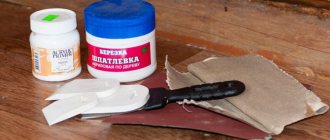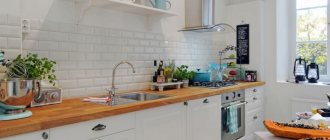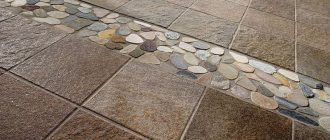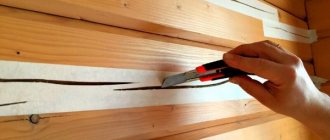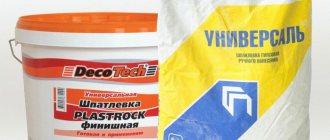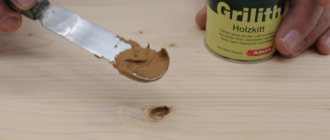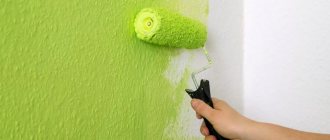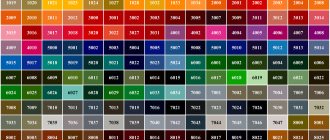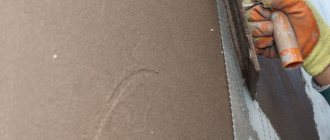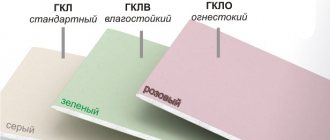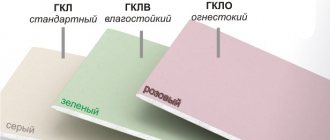-In addition to universal putties for finishing work, there are a number of specialized mixtures for simulating wood. First of all, the difference between them is in the color scheme - universal putties are either white or tinted to match a specific paint. When repairing flaws in wood - chips, fallen knots, dents and nicks - it is very important not to spoil its natural appearance.
What types of wood putties are there with examples and photos, their advantages and disadvantages, application rules, an overview of leading manufacturing companies - further in the article.
Types of putties
In addition to the color scheme that imitates wood species (pine, oak, alder, ash, spruce and others), there are differences in the chemical composition of various putties. They are divided into the following types:
- putties based on synthetic solvents;
- water based;
- oil;
- polymer;
- plaster.
Putties based on synthetic solvents
These also include nitro putty. They were among the first to be developed for working with wood, and have not lost their relevance today.
They have good mechanical strength, dry quickly, but before complete drying they emit an unpleasant, pungent odor and are toxic, so you need to work with them while protecting your respiratory organs with a respirator, in a ventilated room, or better yet, outside. They are used in the restoration of floors and parquet due to their increased abrasion resistance.
Water based
Unlike synthetic solvents, water is not toxic and does not have a pungent odor; therefore, water-based putties are harmless to humans and animals at all stages of work and upon completion. It dries relatively slowly and has good adhesion, which allows it to be applied to carefully sanded and even polished wood.
Read here! Which washing machine is better?
To wipe off excess from the surface, simply use a damp cloth. After complete drying and varnishing, it is not susceptible to moisture. It is elastic, has a long service life, is fireproof and is not susceptible to heat and cold.
How to putty on wood?
Let's see how to putty a wooden surface. To do this you will need a small container, a roller or brush, spatulas, a spray gun and sandpaper. The surface to which the mixture will be applied must be clean and primed.
If a sprayer is used in the work, the material is brought into a liquid state. For a spatula, the mixture should be thick. If you need to cover a large area, then the consistency should be creamy. To locally eliminate defects, it is better to use a dough-like mass.
How to putty wood using a spatula? When working, try to apply even layers. This will work if you use a clean tool. If homemade material is used, the surface will need to be sanded - you can use bars or a sander.
How to make homemade putty (2 videos)
Wood putties (30 photos)
Oil based
The only type of wood putty suitable for outdoor work; it can be used outdoors even without further varnishing or painting. Suitable for processing wooden facades.
It has strong water-repellent properties, is not afraid of ultraviolet radiation, exposure to open air, including sea air. Available in packaging from 500 grams to 15 kg.
Purpose of putty
Puttying is necessary for the restoration of old wooden door panels, parquet, window frames, timber, fences, decorative finishing of plywood coverings, MDF, and various products. The use of high-quality and correctly selected material solves several important problems at once:
- fills all cracks, joints and seams, smoothes out unevenness, masking unnecessary relief;
- forms a protective layer that prevents moisture, dust and dirt from penetrating inside;
- prevents early wear, rotting and drying out of wood;
- evens out the color for painting or emphasizes the natural wood pattern under a transparent topcoat, giving an aesthetically updated look to old materials;
- provides better adhesion to coloring compounds.
The main requirement for puttying wood is to create a perfectly flat surface, otherwise all the effort spent becomes meaningless. You can get the job done flawlessly by choosing a product that has the necessary qualities:
- with plasticizers in the composition, ensuring normal distribution;
- high adhesive properties;
- absence of components harmful to health;
- quick drying.
For the convenience of users, many putties are available in liquid, ready-to-use form. High-quality dry mixtures for wood processing do not contain large particles.
Polymer
Polymer, also known as acrylic wood putty, is currently more common than others. This is due to its relative cheapness, durability, ease of use, good water-repellent properties, elasticity, and low shrinkage coefficient when drying.
Thanks to the modifiers it contains, it is suitable for both living rooms and rooms with high humidity (bathroom, toilets, sauna, kitchen). Also good for restoration of parquet and floor boards.
Application rules
The wood on which the putty will be applied is rough sanded, then dust is removed from it with a brush and a rag, or even better, blown off with a pneumatic gun. Next, apply a spatula with a small slide to the flaw. No matter how much manufacturers praise their product, the putty still shrinks when it dries.
Opinions differ about wood primer. The fact is that putty holds much more firmly on “bare” wood. But after removing its excess, stubborn stains of ingrained putty remain on the wood around the repaired defect.
A primer solves this problem, but the adhesion of the putty to the primed wood is noticeably worse. It is advisable to keep the spatula clean - this will simplify the work. If you need to apply a thick layer, you need to do it in several passes, allowing the intermediate layers to dry. After drying, excess putty is removed with sandpaper.
Review of manufacturers
I present to your attention several of the most famous Russian manufacturers of wood putty compounds that can be used for street work. The presented list contains long-established eminent giants and “newcomers” who appeared on the market recently, but managed to fall in love with the consumer.
I emphasize! I am publishing the data for informational purposes only. Do not evaluate the list as a ranking.
The group is one of the leading domestic manufacturers, specializing in the production of materials intended for decorative finishing. Her catalog contains an acrylic mixture, presented in different, most popular wood tones. The putty is fine-grained, easy to process after hardening, but nevertheless durable and able to withstand significant mechanical loads.
Source gidpokraske.ru
VGT – the brand represents the products of the Russian LLC “VGT Enterprise”, which has established production in the Moscow region and Yaroslavl. The company produces and sells fine putty paste for wood processing. The composition is capable of performing the functions of a finishing putty in places where there is an abundance of moisture.
Source vlz.m.saturn.net
Profilux is another reliable Russian brand of paints and varnishes. Presented by , which has established production at the site of the largest German concern. Putty with this name appeared on the market relatively recently, but has already established itself as a good polymer composition with excellent performance characteristics.
Source stroymateriyali.ru
Bolars is one of the largest Russian manufacturers, having one of the most voluminous catalogs of construction and finishing materials. It has a putty composition that can withstand up to 50 deep-freezing cycles and is designed for use even in the harshest conditions (down to -40°C).
Source kraskolak.ru
